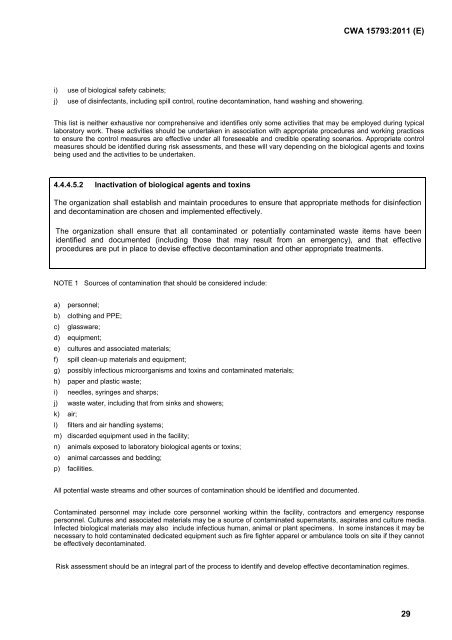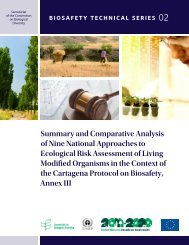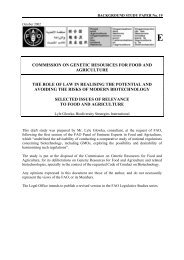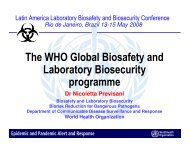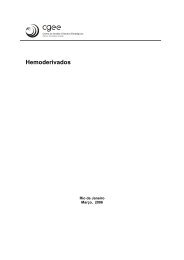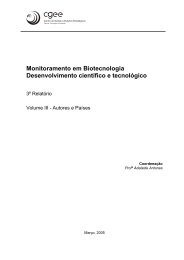CEN WORKSHOP AGREEMENT CWA 15793
CEN WORKSHOP AGREEMENT CWA 15793
CEN WORKSHOP AGREEMENT CWA 15793
You also want an ePaper? Increase the reach of your titles
YUMPU automatically turns print PDFs into web optimized ePapers that Google loves.
<strong>CWA</strong> <strong>15793</strong>:2011 (E)<br />
i) use of biological safety cabinets;<br />
j) use of disinfectants, including spill control, routine decontamination, hand washing and showering.<br />
This list is neither exhaustive nor comprehensive and identifies only some activities that may be employed during typical<br />
laboratory work. These activities should be undertaken in association with appropriate procedures and working practices<br />
to ensure the control measures are effective under all foreseeable and credible operating scenarios. Appropriate control<br />
measures should be identified during risk assessments, and these will vary depending on the biological agents and toxins<br />
being used and the activities to be undertaken.<br />
4.4.4.5.2 Inactivation of biological agents and toxins<br />
The organization shall establish and maintain procedures to ensure that appropriate methods for disinfection<br />
and decontamination are chosen and implemented effectively.<br />
The organization shall ensure that all contaminated or potentially contaminated waste items have been<br />
identified and documented (including those that may result from an emergency), and that effective<br />
procedures are put in place to devise effective decontamination and other appropriate treatments.<br />
NOTE 1 Sources of contamination that should be considered include:<br />
a) personnel;<br />
b) clothing and PPE;<br />
c) glassware;<br />
d) equipment;<br />
e) cultures and associated materials;<br />
f) spill clean-up materials and equipment;<br />
g) possibly infectious microorganisms and toxins and contaminated materials;<br />
h) paper and plastic waste;<br />
i) needles, syringes and sharps;<br />
j) waste water, including that from sinks and showers;<br />
k) air;<br />
l) filters and air handling systems;<br />
m) discarded equipment used in the facility;<br />
n) animals exposed to laboratory biological agents or toxins;<br />
o) animal carcasses and bedding;<br />
p) facilities.<br />
All potential waste streams and other sources of contamination should be identified and documented.<br />
Contaminated personnel may include core personnel working within the facility, contractors and emergency response<br />
personnel. Cultures and associated materials may be a source of contaminated supernatants, aspirates and culture media.<br />
Infected biological materials may also include infectious human, animal or plant specimens. In some instances it may be<br />
necessary to hold contaminated dedicated equipment such as fire fighter apparel or ambulance tools on site if they cannot<br />
be effectively decontaminated.<br />
Risk assessment should be an integral part of the process to identify and develop effective decontamination regimes.<br />
29


